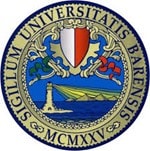successful admissions
of students enter the university of their choice
students consult Education Index when applying for universites
successful admissions
of students enter the university of their choice
students consult Education Index when applying for universites
The University of Bari Aldo Moro, one of the 58 State universities, was founded in 1925 and is attended today by about 60,000 students, across the Bari, Brindisi, and Taranto campuses.
The University was named after one of its most famous students, the statesman Aldo Moro. Moro taught Criminal Law at the University of Bari for several years.
The university offers various courses for undergraduate, graduate and post-graduate students. Aside from teaching, the university is also focused on scientific research at the doctorate level. The University of Bari research centres are highly-interactive, having connections among different departments, universities, and other research centres.
The University of Bari has produced various professionals, educators, scientists, and analysts throughout its almost 90 years of existence. Among the university's famous students include educator and Italian language teacher Felice Maselli, investment analyst Dr Gianfranco Viesti and pathologist Dr. Eugenio Maiorano.

Bari is the capital city of the province of Bari and of the Apulia (or, in Italian, Puglia) region, on the Adriatic Sea, in Italy. It is the second most important economic centre of mainland Southern Italy after Naples, and is well known as a port and university city, as well as the city of Saint Nicholas. The city itself has a decreasing population of about 320,000, as of 2009, over 116 km2, while the fast-growing urban area counts 653,028 inhabitants over 203 km2. The metropolitan area counts 1 million inhabitants.
Bari is made up of four different urban sections. To the north is the closely built old town on the peninsula between two modern harbours, with the splendid Basilica of Saint Nicholas, the Cathedral of San Sabino (1035–1171) and the Swabian Castle built for Frederick II, which is now also a major nightlife district. To the south is the Murat quarter (erected by Joachim Murat), the modern heart of the city, which is laid out on a rectangular grid-plan with a promenade on the sea and the major shopping district (the via Sparano and via Argiro).